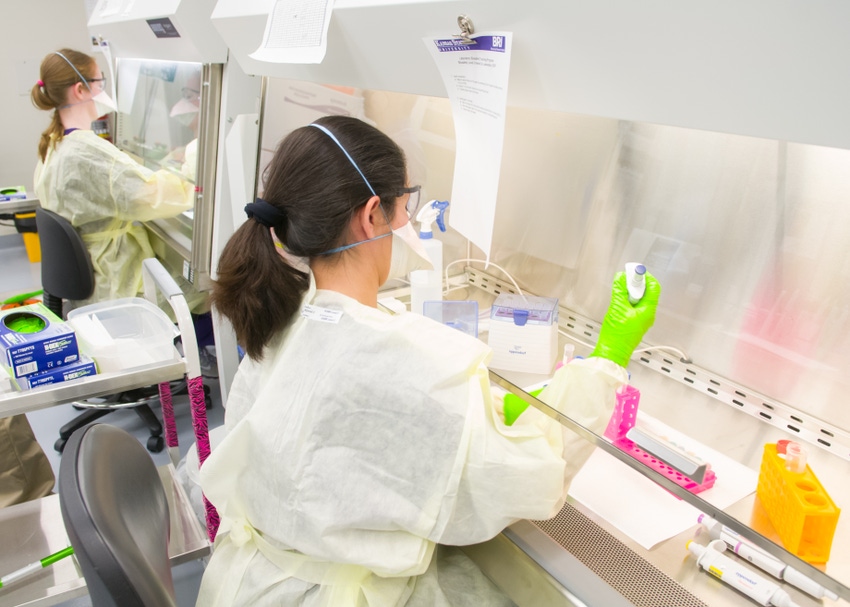First-ever collaborative report lists top-priority zoonoses for U.S.

The Centers for Disease Control & Prevention (CDC) and its U.S. government partners have released the first federal collaborative report listing the top zoonotic diseases — diseases that can spread between animals and people — of national concern for the U.S.
CDC, the U.S. Department of the Interior and the U.S. Department of Agriculture developed the report after jointly hosting the One Health Zoonotic Disease Prioritization Workshop for the U.S.
During the workshop, the agencies agreed on a list of eight zoonotic diseases that are of greatest concern to the nation and made recommendations for next steps using a One Health approach, CDC said.
“Every year, tens of thousands of Americans get sick from diseases spread between animals and people. CDC’s One Health Office is collaborating with [DOI], USDA and other partners across the government to bring together disease detectives, laboratorians, physicians and veterinarians to prevent those illnesses and protect the health of people, animals and our environment,” CDC One Health Office director Casey Barton Behravesh said.
CDC said the eight zoonotic diseases of most concern in the U.S. are: (1) zoonotic influenza, (2) salmonellosis, (3) West Nile virus, (4) plague, (5) emerging coronaviruses (e.g., severe acute respiratory syndrome and Middle East respiratory syndrome), (6) rabies, (7) brucellosis and (8) Lyme disease.
Six out of every 10 infectious diseases in people are zoonotic, which makes it crucial that the nation strengthen its capabilities to prevent and respond to these diseases using a One Health approach, CDC said, explaining that this approach recognizes the connection among people, animals, plants and their shared environment.
This workshop was the first time multiple government agencies in the U.S. worked together on this topic and is a critical step towards a coordinated, U.S.-specific approach to One Health. The workshop report outlines the process, the resulting list of prioritized zoonotic diseases and discussions and recommendations by the participants.
Separately, Kansas State University pointed out that its researchers are actively working on six of the eight diseases named in the federal report: zoonotic influenza, salmonellosis, West Nile virus, emerging coronaviruses, rabies and Lyme disease. University researchers also are addressing other zoonotic diseases of worldwide concern, including headline-makers like Rift Valley fever, Japanese encephalitis, Zika and Shiga toxin-producing Escherichia coli.
The report underscores why the zoonotic disease research, programs and facilities at Kansas State University are critical to national biodefense efforts, said Peter Dorhout, university vice president for research.
Dorhout said Kansas State's research "is crucial to national security and public health. We study several diseases, including zoonotic, that are priorities for the National Bio & Agro-defense Facility (NBAF), and as we do this work, we are training the workforce needed to provide future biodefense."
NBAF is being built by the U.S. Department of Homeland Security adjacent to the Kansas State University campus in Manhattan, Kan., and will be the nation's foremost animal disease facility, with Bio-safety Level 4 laboratories. The university also is home to the Biosecurity Research Institute (BRI), which allows comprehensive infectious disease research on threats to human, animal and plant health in Bio-safety Level 3 labs.
"BRI is like no other facility anywhere else in the world," said Stephen Higgs, the institute's research director and university associate vice president for research. "Collaborative research, education and training activities encompass pathogens of livestock, humans, plants and food. Some of the animal and plant disease research can be done at no other universities in the U.S."
For example, Higgs noted that because of BRI, researchers with Kansas State University and USDA's Agricultural Research Service recently found that white-tailed deer are highly susceptible to the Rift Valley fever virus and that university researchers were able to conduct the first Japanese encephalitis swine research in the U.S. "Both of these zoonotic viruses are threats to the U.S. and are listed as priorities for NBAF," Higgs noted.
About the Author(s)
You May Also Like


.png?width=300&auto=webp&quality=80&disable=upscale)
